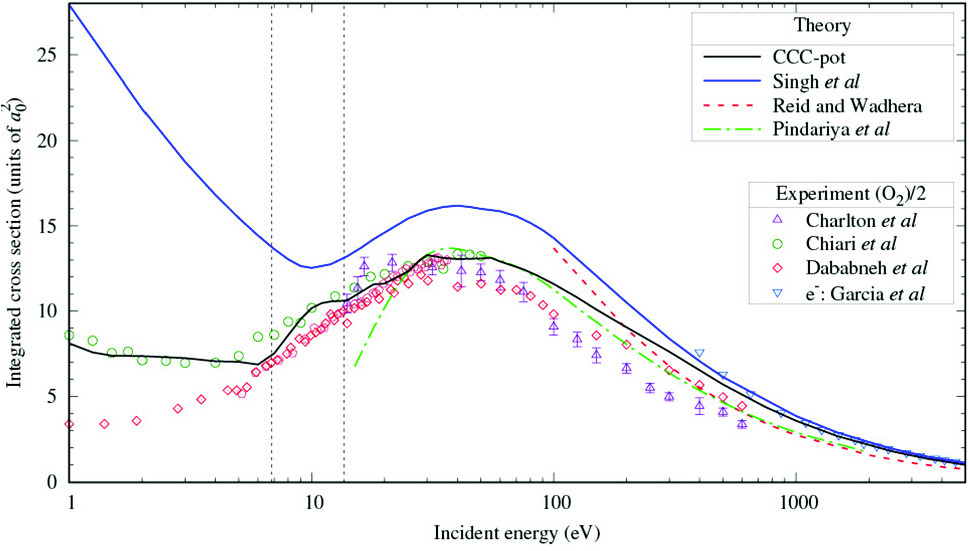https://doi.org/10.1140/epjd/s10053-023-00762-x
Regular Article – Atomic and Molecular Collisions
Calculations of positron scattering from atomic oxygen
Department of Physics and Astronomy, Curtin University, 6102, Perth, WA, Australia
Received:
13
July
2023
Accepted:
26
September
2023
Published online:
20
October
2023
The single-center convergent close coupling (CCC) method has been applied to positron scattering from the oxygen atom. Cross sections have been calculated for total, elastic, momentum transfer, total ionization, inelastic, and excitation scattering processes from threshold to 5000 eV. Due to their relevance in transport studies, we also present stopping power and mean excitation energy results. Low-energy studies have been conducted to calculate scattering length, the hidden Ramsauer–Townsend minimum, and the energy of the positron virtual state. CCC-scaled complex optical potential calculations are utilized to calculate positronium-formation, direct ionization, and values between the positronium-formation and ionization thresholds. Good agreement is generally observed at high energies with past theory, electron-atomic oxygen experiment, and halved electron/positron O experiment. Large discrepancies, however, have been found between current and previous calculations for positronium-formation cross section and for low-energy elastic scattering cross section.
experiment. Large discrepancies, however, have been found between current and previous calculations for positronium-formation cross section and for low-energy elastic scattering cross section.
© The Author(s) 2023
 Open Access This article is licensed under a Creative Commons Attribution 4.0 International License, which permits use, sharing, adaptation, distribution and reproduction in any medium or format, as long as you give appropriate credit to the original author(s) and the source, provide a link to the Creative Commons licence, and indicate if changes were made. The images or other third party material in this article are included in the article’s Creative Commons licence, unless indicated otherwise in a credit line to the material. If material is not included in the article’s Creative Commons licence and your intended use is not permitted by statutory regulation or exceeds the permitted use, you will need to obtain permission directly from the copyright holder. To view a copy of this licence, visit http://creativecommons.org/licenses/by/4.0/.
Open Access This article is licensed under a Creative Commons Attribution 4.0 International License, which permits use, sharing, adaptation, distribution and reproduction in any medium or format, as long as you give appropriate credit to the original author(s) and the source, provide a link to the Creative Commons licence, and indicate if changes were made. The images or other third party material in this article are included in the article’s Creative Commons licence, unless indicated otherwise in a credit line to the material. If material is not included in the article’s Creative Commons licence and your intended use is not permitted by statutory regulation or exceeds the permitted use, you will need to obtain permission directly from the copyright holder. To view a copy of this licence, visit http://creativecommons.org/licenses/by/4.0/.





